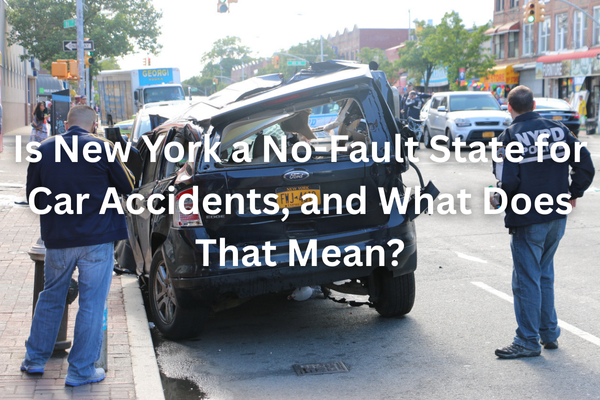

A fender-bender on Sunrise Highway or a rear-end on the LIE can turn your week upside down. The last thing you need is a fight over who pays your first medical bill. New York’s no-fault system is meant to prevent that. After most crashes, your own auto insurance steps in to cover your reasonable medical care and certain economic losses right away—regardless of who caused the accident. That’s the core idea behind “no-fault.”
Yes, New York is a no-fault state. Every registered vehicle must carry Personal Injury Protection (PIP) insurance. Basic PIP typically provides up to $50,000 per person for combined medical expenses and other covered economic losses after a crash. It also pays a portion of lost wages and certain out-of-pocket costs, like rehabilitation, so you can focus on getting better instead of waiting for a lengthy liability investigation.
PIP benefits are designed to move quickly. They usually include:
You can also choose to carry extra protection. Optional Basic Economic Loss (OBEL) adds an additional layer of coverage, and Additional PIP (APIP) can increase benefits beyond the basic $50,000. These add-ons can be invaluable when injuries are more serious or treatment lasts longer than expected.
Generally, you file your no-fault claim with the insurer for the car you occupied at the time of the crash. Passengers use the policy covering the vehicle they were riding in. Pedestrians struck by a vehicle typically file with the insurer of the car that hit them. Special rules can apply for rideshares, commercial vehicles, and out-of-state policies, so it’s wise to confirm the right insurer before you send in forms.
Motorcycle riders and passengers are a major exception: they are not covered by New York no-fault benefits. If you were on a motorcycle, you may pursue the at-fault driver without first going through PIP, but you won’t receive PIP wage or medical benefits.
No-fault pays economic losses only. It does not pay for pain and suffering or other non-economic damages. It also does not pay for vehicle repairs or rental cars. Property damage is handled under the at-fault driver’s property damage liability coverage or your own collision coverage, depending on your policy and the circumstances.
Timing matters. To open a no-fault claim, you must give written notice—most commonly by submitting the NF-2 “Application for No-Fault Benefits”—within 30 days of the crash. Miss that window without a strong, well-documented reason and you risk a denial. Your medical providers will submit their own bills on special forms, and the insurer may request independent medical examinations (IMEs) or additional documentation. Keep copies of everything, and don’t skip scheduled appointments or insurer requests without talking to a lawyer.
New York restricts lawsuits between people covered by PIP to prevent small disputes from clogging the courts. However, there are two important pathways beyond no-fault:
The law lists specific categories that count as serious injuries. Some are straightforward—like fractures, significant disfigurement, or loss of a fetus. Others require medical proof, such as a permanent consequential limitation or significant limitation of a body function or system. There’s also a time-based category: if a medically determined injury keeps you from performing your usual daily activities for at least 90 of the first 180 days after the crash, you may qualify. Meeting any one of these categories allows you to bring a claim for non-economic damages against the at-fault driver.
No-fault is supposed to be simple, but anyone who has navigated the forms, deadlines, and medical exam requests knows it can get complicated quickly. Our team has handled Long Island car accident cases for more than three decades. We help clients:
New York’s no-fault system gets essential medical care and wage benefits started without waiting to prove fault. But it has limits. If your injuries are significant, if your costs exceed PIP, or if an insurer is pushing back on needed treatment, you still have options. Careful documentation, on-time filings, and a clear strategy make a big difference.
If you were hurt in a Long Island car accident, contact Palermo Law for a free consultation. There are no upfront costs and no fee unless we win. We’ll review your benefits, safeguard your deadlines, and fight for every dollar you’re entitled to—so you can focus on healing.